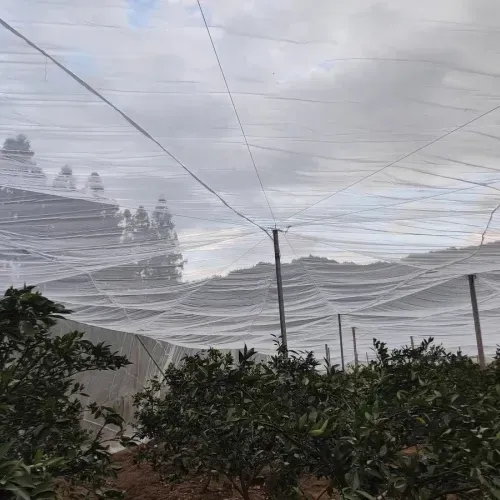-
 Afrikaans
Afrikaans -
 Albanian
Albanian -
 Amharic
Amharic -
 Arabic
Arabic -
 Armenian
Armenian -
 Azerbaijani
Azerbaijani -
 Basque
Basque -
 Belarusian
Belarusian -
 Bengali
Bengali -
 Bosnian
Bosnian -
 Bulgarian
Bulgarian -
 Catalan
Catalan -
 Cebuano
Cebuano -
 China
China -
 Corsican
Corsican -
 Croatian
Croatian -
 Czech
Czech -
 Danish
Danish -
 Dutch
Dutch -
 English
English -
 Esperanto
Esperanto -
 Estonian
Estonian -
 Finnish
Finnish -
 French
French -
 Frisian
Frisian -
 Galician
Galician -
 Georgian
Georgian -
 German
German -
 Greek
Greek -
 Gujarati
Gujarati -
 Haitian Creole
Haitian Creole -
 hausa
hausa -
 hawaiian
hawaiian -
 Hebrew
Hebrew -
 Hindi
Hindi -
 Miao
Miao -
 Hungarian
Hungarian -
 Icelandic
Icelandic -
 igbo
igbo -
 Indonesian
Indonesian -
 irish
irish -
 Italian
Italian -
 Japanese
Japanese -
 Javanese
Javanese -
 Kannada
Kannada -
 kazakh
kazakh -
 Khmer
Khmer -
 Rwandese
Rwandese -
 Korean
Korean -
 Kurdish
Kurdish -
 Kyrgyz
Kyrgyz -
 Lao
Lao -
 Latin
Latin -
 Latvian
Latvian -
 Lithuanian
Lithuanian -
 Luxembourgish
Luxembourgish -
 Macedonian
Macedonian -
 Malgashi
Malgashi -
 Malay
Malay -
 Malayalam
Malayalam -
 Maltese
Maltese -
 Maori
Maori -
 Marathi
Marathi -
 Mongolian
Mongolian -
 Myanmar
Myanmar -
 Nepali
Nepali -
 Norwegian
Norwegian -
 Norwegian
Norwegian -
 Occitan
Occitan -
 Pashto
Pashto -
 Persian
Persian -
 Polish
Polish -
 Portuguese
Portuguese -
 Punjabi
Punjabi -
 Romanian
Romanian -
 Russian
Russian -
 Samoan
Samoan -
 Scottish Gaelic
Scottish Gaelic -
 Serbian
Serbian -
 Sesotho
Sesotho -
 Shona
Shona -
 Sindhi
Sindhi -
 Sinhala
Sinhala -
 Slovak
Slovak -
 Slovenian
Slovenian -
 Somali
Somali -
 Spanish
Spanish -
 Sundanese
Sundanese -
 Swahili
Swahili -
 Swedish
Swedish -
 Tagalog
Tagalog -
 Tajik
Tajik -
 Tamil
Tamil -
 Tatar
Tatar -
 Telugu
Telugu -
 Thai
Thai -
 Turkish
Turkish -
 Turkmen
Turkmen -
 Ukrainian
Ukrainian -
 Urdu
Urdu -
 Uighur
Uighur -
 Uzbek
Uzbek -
 Vietnamese
Vietnamese -
 Welsh
Welsh -
 Bantu
Bantu -
 Yiddish
Yiddish -
 Yoruba
Yoruba -
 Zulu
Zulu
Durable Steel Mesh for Enhanced Strength and Structural Integrity
The Importance of Thick Steel Mesh in Construction and Industry
In the realm of construction and industrial applications, the use of thick steel mesh has become increasingly prevalent due to its unparalleled strength, durability, and versatility. Steel mesh, often made from high-quality steel wire, is a key component in reinforcing concrete, creating structural stability, and ensuring safety across various projects. As we explore the multifaceted benefits and applications of thick steel mesh, it becomes clear why it is considered essential in modern engineering.
One of the primary advantages of thick steel mesh is its ability to distribute loads. When used in concrete structures, it bolsters the tensile strength of the concrete, which is inherently weak in tension. Thick steel mesh effectively absorbs and redistributes applied stresses, preventing cracks and structural failures. This characteristic is particularly crucial in regions prone to seismic activity or heavy loads, as it enhances the overall integrity of buildings and infrastructure, making them safer and more reliable.
Beyond its structural applications, thick steel mesh plays a significant role in various industries, including mining, agriculture, and manufacturing. In mining, for example, steel mesh is vital for creating robust enclosures that protect workers and equipment from hazards. It can also be used in the construction of drainage systems, ensuring that water management is effective and that the risk of erosion or flooding is minimized. In agricultural applications, thick steel mesh fencing is commonly used to protect crops from wildlife while providing security for livestock. Its strength and durability make it an ideal choice for these demanding environments.
The manufacturing sector also benefits from thick steel mesh, as it is often used in the production of heavy machinery and equipment
. It can provide foundational support for components that require reinforcement, ensuring that machines operate efficiently under high loads. Furthermore, thick steel mesh can be fabricated into various shapes and sizes, allowing for flexibility in design and adherence to specific project requirements.thick steel mesh

Another considerable benefit of thick steel mesh is its resilience against corrosive elements. When treated with protective coatings, such as galvanized or stainless steel finishes, it becomes highly resistant to rust and wear, extending its lifespan even in harsh environments. This durability translates to reduced maintenance costs and long-term investment value, making it an economically sound choice for project managers and engineers.
Moreover, the installation of thick steel mesh in concrete offers significant time-saving advantages. It can be prefabricated to precise dimensions and easily integrated into construction processes, reducing labor time and minimizing waste. This efficiency not only accelerates project timelines but also allows for more predictable budgeting and resource allocation.
As industries continue to prioritize sustainability and eco-friendliness, thick steel mesh stands out due to its recyclability. When a structure is decommissioned, the steel mesh can be repurposed, reducing waste and the environmental impact of construction practices. This aligns with the growing trend toward sustainable building materials and practices, making thick steel mesh a smart choice for environmentally conscious architects and builders.
In conclusion, thick steel mesh has earned its place as an indispensable material in various sectors, particularly in construction and industrial applications. Its ability to enhance structural integrity, provide safety, and withstand tough environmental conditions makes it a preferred choice for engineers and builders worldwide. As advancements in materials science continue to evolve, the applications and benefits of thick steel mesh will likely expand even further, reinforcing its status as a foundational component in the architecture of the future. Embracing thick steel mesh not only promotes safety and efficiency but also aligns with the values of sustainability, setting the stage for innovative and resilient infrastructure development.
-
Shipping Plastic Bags for Every NeedNewsJul.24,2025
-
Safety Netting: Your Shield in ConstructionNewsJul.24,2025
-
Plastic Mesh Netting for Everyday UseNewsJul.24,2025
-
Nylon Netting for Every UseNewsJul.24,2025
-
Mesh Breeder Box for Fish TanksNewsJul.24,2025
-
Expanded Steel Mesh Offers Durable VersatilityNewsJul.24,2025











